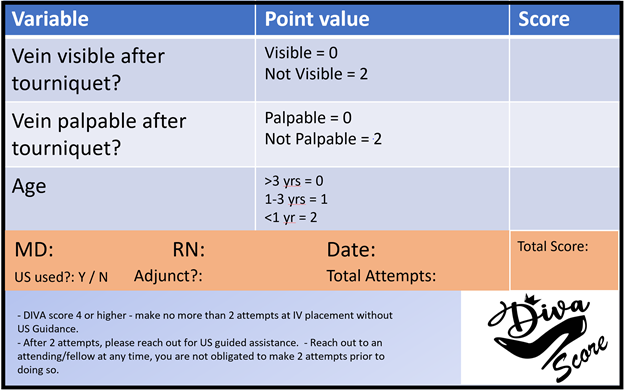Emergency Medicine: Quality Improvement
Emergency Medicine 9
451 - Old Dogs New Sticks: A Novel Approach to Teaching Ultrasound Intravenous Line Placements in the Emergency Department
Publication Number: 451.312
.jpg)
Johnathan A. Martindale, MD (he/him/his)
Emergency Medicine Resident
The Warren Alpert Medical School of Brown University
Johnston, Rhode Island, United States
Presenting Author(s)
Background: Peripheral intravenous (PIV) access can be challenging, particularly in the pediatric population. The utility of ultrasound (US) for the reduction of failed PIV attempts or “sticks” is well established.] Despite its proven utility, the use of US-guided PIV (USGIV) access is limited due to the skill, comfort and variability in the training of point-of-care ultrasound (POCUS) of ED staff.
Objective: This study assessed the feasibility and efficacy of a resident-led USGIV curriculum designed for training pediatric emergency department (PED) providers with various levels of POCUS training.
Design/Methods:
This study was conducted at a level 1 pediatric trauma center ED. A needs assessment was conducted for two months of nursing documentation of PIVs using a modified Difficult Intravenous Access (DIVA) scorecard.
Participants performed a review of online didactic videos. Training was led by two senior EM residents. Technique was taught via a phantom simulator. Participants were required to successfully place 10 USGIVs on either adult or pediatric patients. The success of the study was determined by pre- and post-curriculum assessments of exposure, knowledge, skill, and comfort. The trajectory of skills during the study was tracked using a value-based assessment of each consecutive USIV attempt. As an incentive for enrollment to the program, 25 American Board of Pediatrics MOC 4 credits were offered to those that successfully completed the study.
Results: A cohort of 19 participants (6 fellows, 13 attendings) volunteered during the enrollment period of April-October 2022. 10 participants completed the full curriculum by closure, in late December 2022. Participants who finished the study completed a post-course survey.
For the ‘completion cohort’, pre-intervention Likert scores for comfort in USIV use ranged 2-3. Following completion of the course Likert scores ranged from 3-5, showing improvement across all participants. Following the study, participants reported an increase of 1-6 additional placements per month.
Conclusion(s): This study examined a successful teaching curriculum to enhance skills and use of USGIV placement by PEM providers. Overall, it was seen that this program led to a departmental change in the form of increased comfort and out-of-study use of POCUS for difficult PIV placements amongst PED providers.
Notably, participant attrition was relatively high. Future iterations to the curricula as discussed would benefit addressing barriers to program completion. Plans for follow-up studies will examine the long-term impact of this study on USIVs usage in the department.

